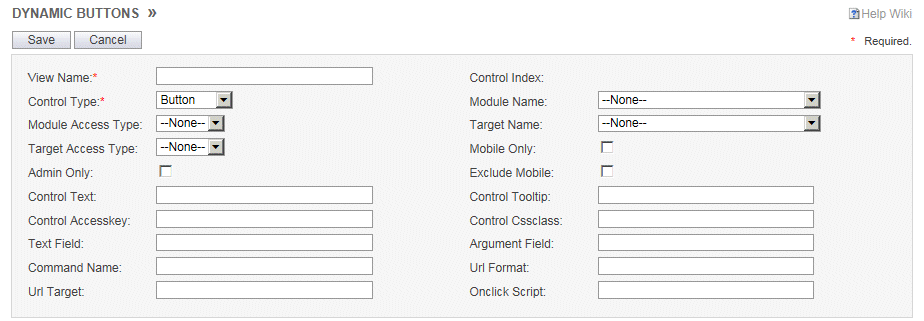Dynamic Buttons
The Dynamic Buttons module is used to manage buttons on EditViews or DetailViews.
Most buttons post-back to the server, but a ButtonLink can navigate to a URL when clicked. URL can include insertion values that come from the Text Field.
The insertion values are of the format {0}, {1}, {2}.
The button layout can be exported to SQL so that the configuration can be applied to another system.
| Field |
Description |
| View Name |
The view name. |
| Control Index |
The display index. |
| Control Type |
The type of the button.
(i.e. Button, Buttonlink, Hyperlink) |
| Module Name |
The module name, used for access rights. |
| Module Access Type |
The access type for the current module.
(i.e. View, List, Edit, Delete) |
| Target Name |
The target module, used for access rights. |
| Target Access Type |
The access type for the target module.
(i.e. View, List, Edit, Delete) |
| Mobile Only |
The button is mobile-only. |
| Admin Only |
The button is admin-only. |
| Exclude Mobile |
Exclude on mobile devices. |
| Control Text |
The display text for the button. |
| Control Tooltip |
The tooltip for the button. |
| Control Accesskey |
The access key. |
| Control Cssclass |
The class type for the button. |
| Text Field |
The text field used when rendering the URL. |
| Argument Field |
The argument field, used in conjuction with the command name for post-back events. |
| Command Name |
The command name used for post-back events. |
| Url Format |
The URL format. Use {0} for first parameter. |
| Url Target |
The HTML target for the button. |
| Onclick Script |
The onclick script. |
